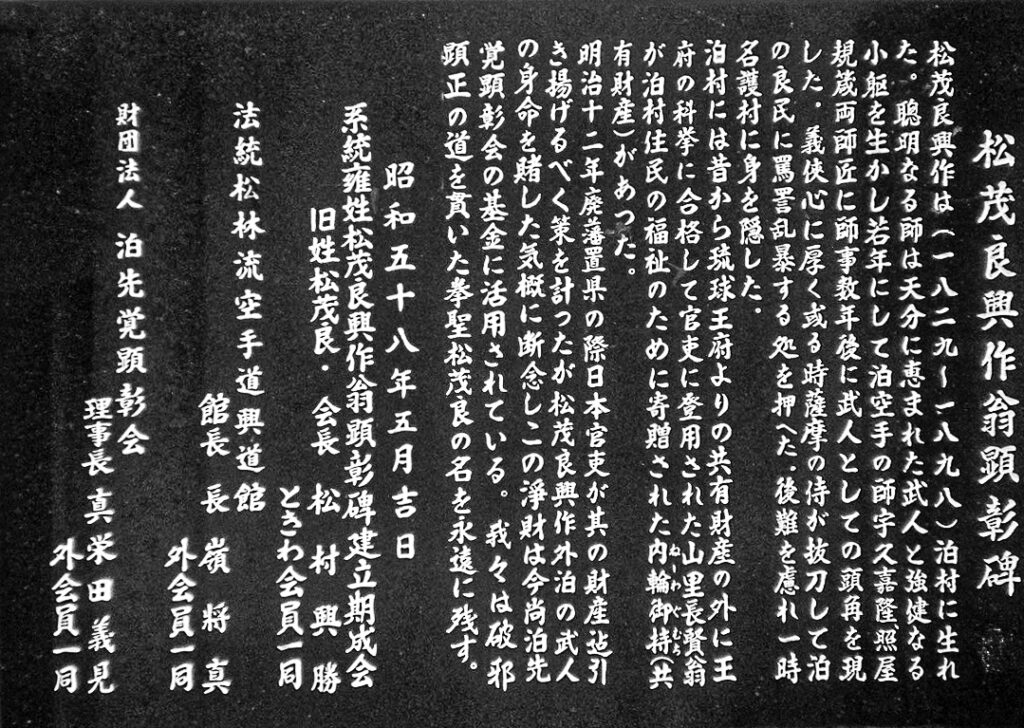Kensei refers to a kendō practitioner who was called “Saint of the Sword” (kensei 剣聖) during the Shōwa period (1926–1989). However, it is not an official title established by the Dai Nippon Butokukai or the All Japan Kendo Federation.
It refers to instructors who had a strong influence on the establishment of modern kendō, people who played an active role in demonstrations held with the Emperor in attendance during the early Shōwa period, and people who were awarded 9th or 10th dan in kendō.
In particular, the following people are often called Shōwa no Kensei (Saint of the Sword of the Shōwa Period):
- Takano Sasaburō (1862–1950)
- Naitō Takaharu (1862–1929)
- Nakayama Hakudō (1872–1958)
- Mochida Moriji (1885–1974)
- Saimura Gorō (1887–1969)
In Okinawa karate, the concept of “Saint of the Sword” (kensei) was adopted as “Saint of the Fist” (kensei 拳聖). As one website states,
When you visit Okinawa, as expected of the birthplace of karate, there are monuments honoring kenseis everywhere.
I believe it was first used on the memorial stone for Itosu Ankō, which is the oldest of this kind of memorials. However, it is found as well in the descriptions on the memorial stones of Matsumura Sōkon, Hanashiro Chōmo, Kyan Chōtoku, Matsumora Kōsaku, and Higaonna Kanryō and Miyagi Chōjun (however, here only Miyagi is referred to as kensei), and there are probably more.
Since more and more memorial stones are built on Okinawa, the term kensei will probably be used more and more as well. Besides examples such as the adoption and customization of uniform and rank system from jūdō, the title system from the All Japan Kendō Federation, and many others, this is another conceptual and terminological adaption from Japanese budō, particularly in contemporary Okinawa karate.
© 2023, Andreas Quast. All rights reserved.

